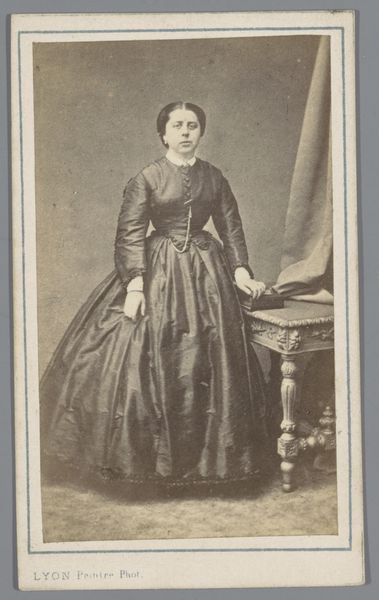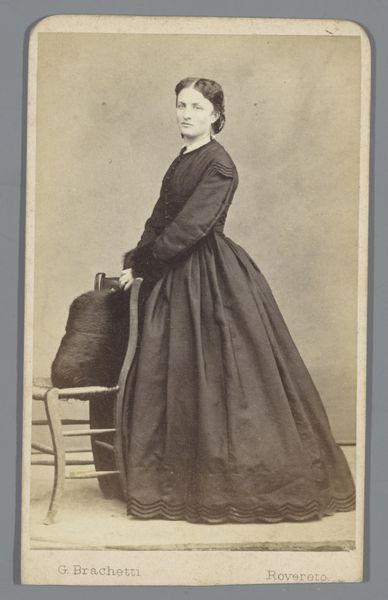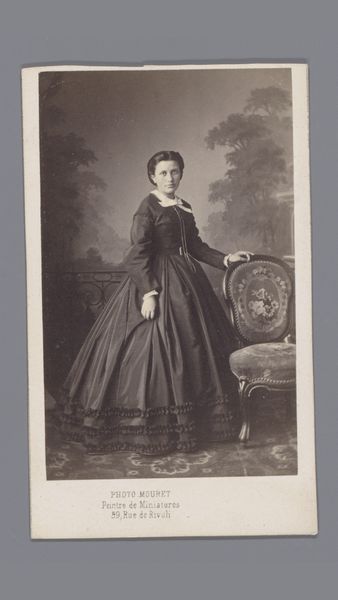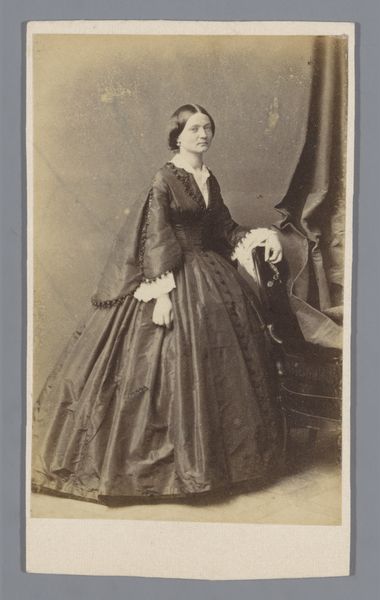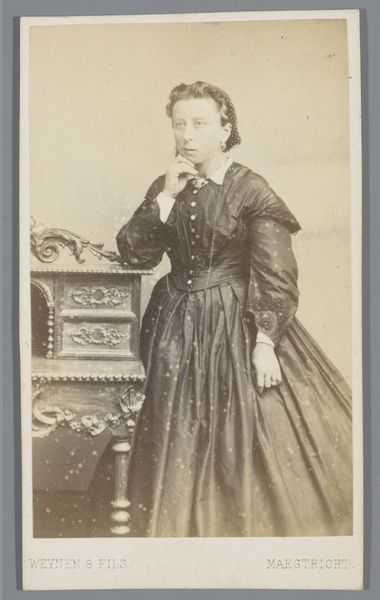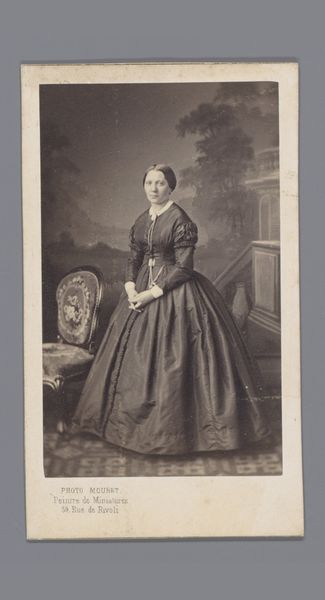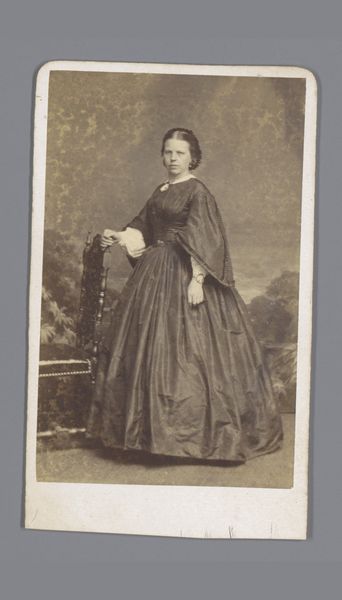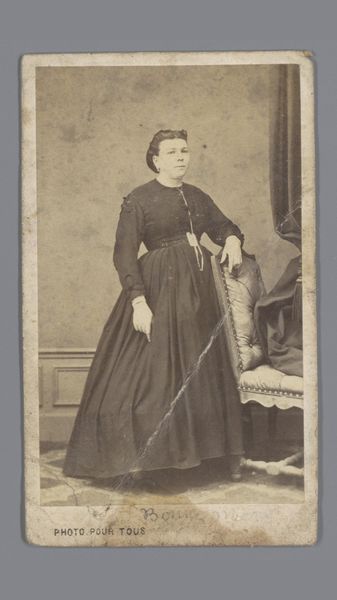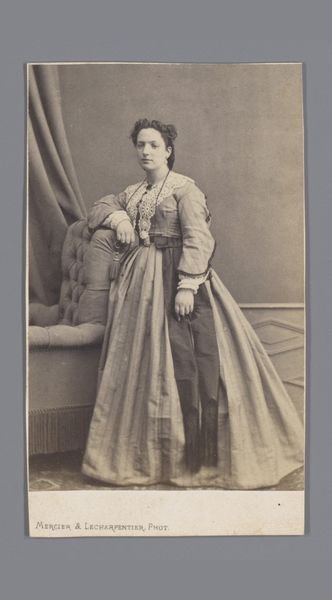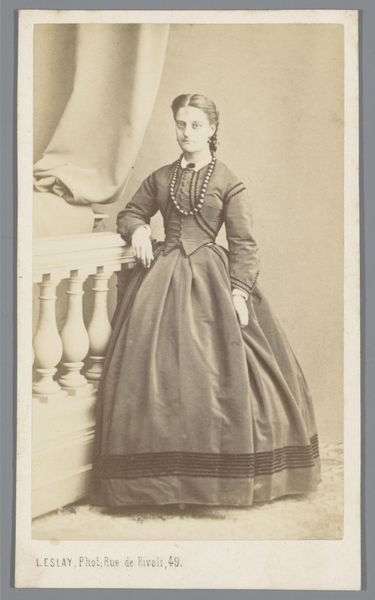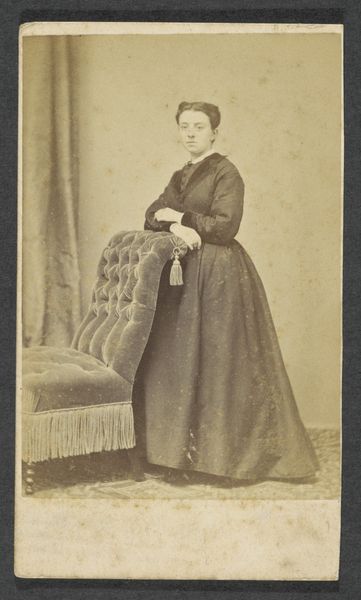
photography
#
portrait
#
photography
#
realism
Dimensions: height 105 mm, width 60 mm
Copyright: Rijks Museum: Open Domain
Curator: What a striking image! It’s a portrait photograph of an unknown woman, dating from somewhere between 1855 and 1870. The piece adheres, in part, to the aesthetic tenets of Realism, showcasing the sitter in perhaps an unvarnished style of portraiture. Editor: I agree; it's a beautiful photo! She has such a strong presence despite the limitations of the early photographic process. But also...sad, a little bit? Maybe it's the muted tones, or just her solemn expression. Curator: Muted tones certainly play a pivotal role. Sepia, resulting from early photographic techniques, was used to render form and shadow, so, colour as an indicator becomes null. Instead, all information becomes coded, signified, and relayed in shadow, the angle of light, and the tonal interplay. In this photographic image, one must see Realism beyond reproduction of form to its ideological and structural applications. Note, too, how the composition directs our attention towards the sitter, centering the subject matter. Editor: Absolutely. I am wondering who she might have been, this woman with that quiet stare. The texture of her dress looks so elaborate—it reminds me of the weight and restriction of that time. The composition creates a kind of contained story, even. Curator: Precisely. The dress, in its voluminous materiality, becomes another semiotic indicator in reading the text. Costume serves to position the sitter in social and economic strata. Editor: It is like that drape behind her… luxurious, and almost as present as she is, a sort of parallel player that signals status. Even with the sitter facing towards us, almost confidently, one also reads something reserved, in the way she stands and holds onto what looks like the back of a chair. There is formality—so distant from our world of the selfie!—and then intimacy with the gaze meeting the viewer's eyes across time. It makes me reflect on time and mortality, as well as representation. Curator: Indeed. Photography allowed for new visual encounters with individuals and society; there's a powerful interplay between the sitter's intentional presentation and what Roland Barthes described as the inevitable "that-has-been" quality intrinsic to photography. These photographic portraits simultaneously immortalize and mourn the past. The photo invites us to dissect these nuances to fully appreciate the text it represents. Editor: Right, it is a document to be decoded! Looking closer, it's hard to ignore the small, light freckles on the print surface...remnants, possibly of the development? Those incidental marks seem poignant, offering a glimpse into a particular era of image production while humanising her depiction. Curator: Yes, a perfect case-study of indexicality and representation within a singular pictorial frame. Editor: All those thoughts sparked from just one image…amazing. Curator: A fascinating conversation and demonstration of critical engagement with image-based theory and Realism, all triggered by a silent portrait of a mysterious woman!
Comments
No comments
Be the first to comment and join the conversation on the ultimate creative platform.


